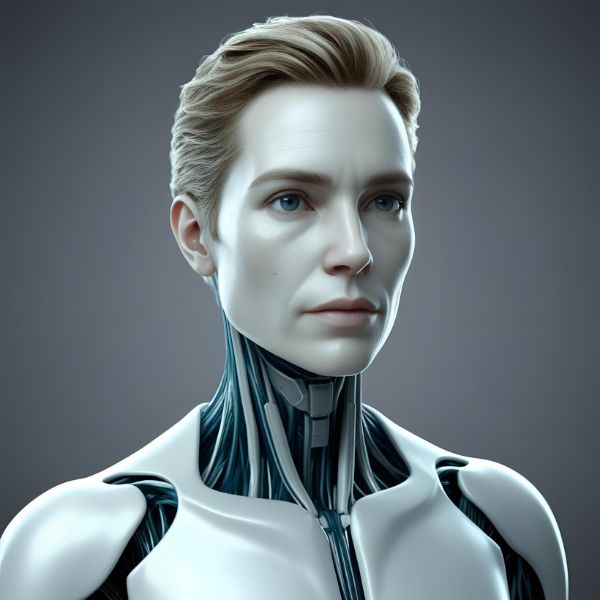The Evolution of AI Humanoid Robots: Shape & Intelligence

The Global Evolution of Humanoid Robots: Who Leads in Shape and Intelligence?
Humanoid robots have come a long way from clunky prototypes to advanced AI-driven machines that mimic human gestures, expressions, and even cognitive abilities. Global tech giants and research institutions have been in a race to develop robots that are not only human-like in appearance but also in intelligence. This article explores the progress in humanoid robotics worldwide and identifies the frontrunners in both realism and artificial intelligence.
1. Most Human-Like Robots: The Leaders in Shape
a. Ameca (Engineered Arts – UK)
Ameca is one of the most realistic humanoid robots to date, featuring ultra-realistic facial expressions, fluid movements, and responsive AI. It is primarily designed for communication and research but does not yet have walking capabilities.
b. Atlas (Boston Dynamics – USA)
Boston Dynamics’ Atlas is considered one of the most advanced bipedal robots, capable of running, jumping, and performing acrobatics. While not the most human-looking, it demonstrates remarkable mobility for industrial and rescue applications.
c. Sophia (Hanson Robotics – Hong Kong)
Sophia, known for its lifelike appearance and ability to engage in conversations, has been a global sensation. It is a step toward socially interactive robots, though its conversational AI is still somewhat limited.
d. Nadine (NTU Singapore)
Nadine is a social robot designed to resemble a human as closely as possible. It has realistic facial expressions and the ability to recall past conversations, making it suitable for customer service and elderly care roles.
e. CyberOne (Xiaomi – China)
Xiaomi’s CyberOne is an advanced humanoid robot developed in China, featuring expressive interactions, walking abilities, and AI-powered speech recognition.
2. Most Intelligent Humanoid Robots
a. Tesla Optimus (USA)
Tesla Optimus is expected to revolutionize AI-driven humanoid robots by integrating Tesla’s AI and machine learning technologies. It is designed for workplace and household automation.
b. Ameca with GPT Integration (UK)
Ameca has integrated AI models like ChatGPT to enhance its conversational abilities, making it one of the most sophisticated humanoids in terms of verbal intelligence. It can engage in real-time, meaningful conversations with users.
c. Digit (Agility Robotics – USA)
Digit is an AI-powered humanoid designed for warehouse logistics. It excels in adaptability and decision-making, making it suitable for real-world applications.
d. Ai-Da (UK)
Ai-Da is the world’s first ultra-realistic humanoid robot artist. It can paint and create artwork using AI-driven decision-making, showcasing intelligence in creative fields.
3. When Will Humanoid Robots Have ChatGPT-4.0 Level Intelligence?
Experts predict that within the next 5-10 years, humanoid robots will achieve near-human cognitive abilities, capable of processing real-time data, learning dynamically, and engaging in deep conversations without pre-programmed responses.
4. Who Is Selling Them and How Much Do They Cost?
- Ameca (Engineered Arts): Estimated at $100,000+, not yet publicly available.
- Sophia (Hanson Robotics): Previously sold for $100,000+ in limited editions.
- Tesla Optimus (Expected): Projected to cost $20,000-$50,000.
- Digit (Agility Robotics): Priced at $250,000 for industrial applications.
- CyberOne (Xiaomi): No commercial pricing yet, but expected to be more affordable for consumer markets.
5. Can They Learn from Training or Is Data Pre-Programmed?
Modern humanoid robots use AI to learn from data and interactions. Some, like Tesla Optimus and Ameca, will improve through experience, while others still rely on structured inputs for accuracy.
Training in Virtual Reality with NVIDIA’s Omniverse
One of the most groundbreaking developments in humanoid AI training is the use of NVIDIA’s Omniverse (formerly Cosmos). This virtual reality environment allows robots to simulate real-world scenarios, interact with digital objects, and learn at an accelerated pace.
For example, a human may take 1,000 years to master all known skills, but an AI humanoid can achieve this level of learning in just 3 days using Omniverse’s reinforcement learning models. Robots like Tesla Optimus and Atlas can be trained in Omniverse to refine motor skills, navigate environments, and adapt to unpredictable situations, reducing real-world training costs and risks.
Is Omniverse Real, and Has It Been Approved by Any Authorities?
NVIDIA’s Omniverse is an advanced simulation platform that merges virtual reality (VR) and augmented reality (AR) to create highly realistic 3D environments. It’s often referred to as a “digital twin” of the real world, meaning it can replicate and simulate real-life scenarios with incredible precision. It allows robots and AI to interact within virtual worlds that closely mirror physical reality, providing a testing ground for everything from physical movement to decision-making and strategy optimization.
This realism is a result of its cutting-edge technology, which integrates the latest in AI, physics simulation, and real-time rendering. The platform is built on NVIDIA’s RTX graphics technology, which supports real-time ray tracing, giving virtual environments a level of visual detail that makes them nearly indistinguishable from real-world visuals.
As for official approval, Omniverse is primarily developed for research, engineering, and industrial applications, making it a tool rather than a fully certified product by regulatory bodies. However, it’s important to note that Omniverse is widely used by major industries and academic institutions for simulation and design purposes. It’s seen as a highly advanced tool in fields like:
- Automotive and aerospace engineering, where companies test new vehicle designs in virtual environments before physical prototypes are made.
- Entertainment and gaming, where virtual environments are used for creating realistic virtual worlds.
- Robotics, where training robots in simulated environments reduces risks and testing time.
While Omniverse itself is not necessarily “approved” by a single governing body, its use is regulated by industry standards in fields like engineering, robotics, and AI development. Companies working with Omniverse have to ensure their simulations meet industry requirements, whether that’s for safety, performance, or accuracy.
So while Omniverse has not been directly “approved” by a regulatory body, its credibility comes from being used by trusted institutions and its compliance with general industry standards. The platform is a groundbreaking tool that enables faster, safer, and more efficient development of technologies like humanoid robots.
6. When Will Humanoid Robots Be Mass Produced?
Mass production is expected to begin by 2025-2030. Tesla aims to bring Optimus to mass markets, while Agility Robotics is already producing Digit in small batches for industrial use. CyberOne from Xiaomi could be one of the first consumer-targeted humanoid robots.
Disclaimer: This blog article is for informational purposes only and should not be considered financial advice. Everyone’s financial situation is unique. Always consult with a qualified financial advisor or planner to assess your individual circumstances before making financial decisions.



0 Comments